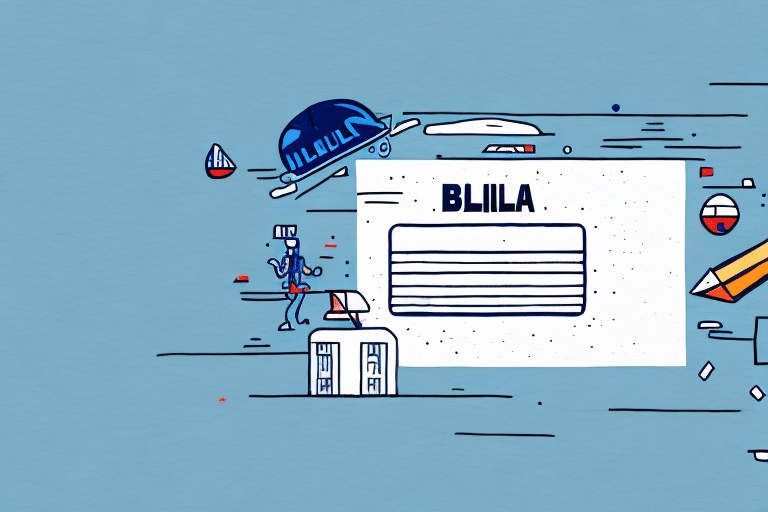Who Issues a Bill of Lading?
A bill of lading is an essential document that serves as proof of ownership and transportation for goods being shipped. This document contains detailed information, including the names of the parties involved, the type and quantity of goods, and the shipping and delivery dates. A bill of lading is issued by the carrier, which can be a freight forwarder, shipping line, or trucking company, and serves as a receipt for goods received for shipment. It is a legal document of significant importance in international trade, ensuring the accuracy and smooth operation of logistics processes.
Understanding the Bill of Lading
A bill of lading functions as a contract between the shipper and the carrier, outlining the terms and conditions for transporting goods. It is a pivotal document in trade transactions, especially in international imports and exports. The bill of lading provides evidence that the carrier has received the goods and serves as a title document, allowing the transfer of ownership. Accurate information on the goods, including descriptions and quantities, is crucial to prevent disputes and ensure legal compliance.
Financial Collateral
One significant aspect of a bill of lading is its use as collateral for financing. Financial institutions often accept bills of lading as security for loans, leveraging the documented value of the shipped goods. This financial tool aids businesses in maintaining liquidity and managing operations effectively.
Dispute Resolution
In cases of disputes between the shipper and the carrier regarding the condition or quantity of goods, the bill of lading serves as authoritative evidence. It provides a clear record of the goods' condition at the time of shipment, facilitating the resolution of claims related to damages or losses during transit.
History and Evolution of the Bill of Lading
The concept of the bill of lading dates back to ancient merchant practices, where similar documents were used to verify ownership of transported goods. The modern bill of lading emerged in the 18th century with the dominance of sea transport. As transportation methods evolved with steam and rail, the bill of lading adapted to accommodate these changes, expanding its usage across various modes of transport.
Today, the bill of lading remains indispensable in international trade, adapting to digital advancements with the introduction of electronic bills of lading (e-BL). While digital formats offer enhanced efficiency and security, paper-based bills of lading are still widely used due to existing legal frameworks and regulatory requirements.
The Parties Involved in a Bill of Lading
A bill of lading typically involves three primary parties: the shipper (consignor), the carrier (freight forwarder), and the consignee. The shipper is responsible for sending the goods, the carrier handles their transportation, and the consignee receives the goods at the destination.
Customs Officials
Customs officials play a critical role in the bill of lading process by ensuring that all necessary documentation is accurate and that the goods comply with import and export regulations. Their inspections help prevent the movement of prohibited or restricted items.
Port Authorities
Port authorities manage the logistics of goods entering and exiting ports, including loading and unloading cargo, storage, and maintaining port infrastructure. Their coordination is vital for the timely and safe transportation of goods.
Types of Bill of Lading
Several types of bills of lading are used in international trade, each tailored to specific needs:
- Straight Bill of Lading: Specifies a direct shipment to a particular consignee without the ability to transfer ownership.
- Order Bill of Lading: Can be transferred to another party, allowing for the sale or delegation of goods during transit.
- Negotiable Bill of Lading: Functions similarly to a financial instrument, enabling it to be traded or used as collateral.
- Through Bill of Lading: Used for shipments involving multiple carriers and transportation modes across different jurisdictions.
- Received for Shipment Bill of Lading: Indicates that the goods have been received by the carrier but not yet loaded onto the vessel.
- Liner Bill of Lading: Common in container shipping, covering the entire journey of a container from origin to destination.
The Importance and Benefits of a Bill of Lading
The bill of lading is a cornerstone of international trade, offering several key benefits:
- Proof of Ownership: Validates the sender's ownership of the shipped goods.
- Legal Protection: Provides a legal basis for resolving disputes and claims related to the shipment.
- Financing: Acts as collateral for loans, facilitating business operations.
- Information Accuracy: Ensures all parties have accurate details about the goods, reducing errors and delays.
Financial Institutions and Collateral
According to the Investopedia, financial institutions often require a bill of lading as part of the documentation for trade financing. This practice mitigates risk by providing tangible evidence of the goods' existence and value.
Legal Framework
The legal implications of a bill of lading are significant. Under international conventions such as the Convention on Contracts for the International Carriage of Goods by Sea (Carriage Convention), the bill of lading outlines the responsibilities and liabilities of the parties involved, ensuring compliance and accountability.
Legal Implications and Obligations
As a legally binding document, the bill of lading imposes specific obligations on all parties:
- Carrier Responsibilities: Ensuring the safe and timely transportation of goods as per the terms outlined.
- Shipper Obligations: Providing accurate information about the goods and adhering to contractual terms.
- Consignee Duties: Receiving the goods in accordance with the agreed terms and inspecting them upon arrival.
Non-compliance with these obligations can lead to legal disputes, financial penalties, and reputational damage for the involved parties.
Filling Out a Bill of Lading
Completing a bill of lading accurately is crucial to avoid complications. Essential details include:
- Parties Involved: Names and addresses of the shipper, carrier, and consignee.
- Goods Description: Detailed information about the type, quantity, and condition of the goods.
- Transportation Details: Mode of transport, route, and expected delivery dates.
- Special Instructions: Any specific handling requirements or conditions related to the shipment.
Errors in these details can result in delays, additional costs, or legal issues. Utilizing digital tools can enhance accuracy and efficiency in completing this process.
Common Mistakes to Avoid
When issuing a bill of lading, certain mistakes can lead to significant repercussions:
- Incomplete Information: Omitting critical details about the shipment can cause delays and disputes.
- Incorrect Labeling: Failing to properly label hazardous or sensitive goods may result in safety hazards and legal penalties.
- Insufficient Insurance: Not securing adequate insurance coverage can expose parties to financial losses in case of damage or loss.
- Regulatory Non-Compliance: Ignoring necessary permits and licenses can halt shipments and incur fines.
Adhering to best practices and utilizing automated systems can help mitigate these risks.
Electronic vs. Paper-based Bills of Lading
The transition from paper-based to electronic bills of lading (e-BL) has revolutionized document handling in international trade. Electronic bills of lading offer numerous advantages:
- Efficiency: Faster processing and reduced administrative overhead.
- Security: Enhanced protection against fraud and unauthorized alterations.
- Accessibility: Real-time access and tracking of shipment status.
Despite these benefits, many regions still rely on paper-based bills due to established legal frameworks and resistance to change. However, the adoption of e-BL is steadily increasing, supported by advancements in blockchain technology and digital signatures.
Technological Advancements in Bill of Lading Management
Technology has significantly impacted the issuance and management of bills of lading:
- Blockchain: Provides a decentralized and tamper-proof ledger for tracking bills of lading, enhancing transparency and security.
- Artificial Intelligence: Automates data entry and verification, reducing errors and speeding up processing times.
- Smart Contracts: Facilitates automated execution of contractual terms based on predefined conditions, streamlining workflows.
These technologies not only improve operational efficiency but also foster greater collaboration among supply chain stakeholders.
Best Practices for Managing Bills of Lading
To ensure the effective issuance and management of bills of lading, consider the following best practices:
- Maintain Accurate Records: Keep detailed and organized records of all transactions and documents.
- Timely Issuance: Ensure that bills of lading are issued promptly to avoid delays in the supply chain.
- Leverage Digital Solutions: Utilize electronic systems to enhance accuracy and streamline processes.
- Compliance: Adhere to international trade standards and regulations to ensure legal conformity.
- Transparency: Foster open communication and information sharing among all parties involved.
Implementing these practices can lead to more efficient operations, reduced risks, and stronger business relationships.
Challenges and Future Trends
While the bill of lading remains vital in international trade, it faces several challenges:
- Complex Supply Chains: Increasingly intricate logistics networks complicate the management of bills of lading.
- Security Concerns: The need for robust measures to prevent fraud and unauthorized access is paramount.
- Regulatory Variations: Differing regulations across countries create inconsistencies and compliance challenges.
Looking ahead, future trends include the broader adoption of blockchain for enhanced security, the integration of artificial intelligence for predictive analytics, and the continued shift towards digital documents to improve efficiency and reduce environmental impact.
As international trade continues to evolve, the bill of lading will adapt to meet new demands, leveraging technology to overcome existing challenges and support seamless global commerce.




















